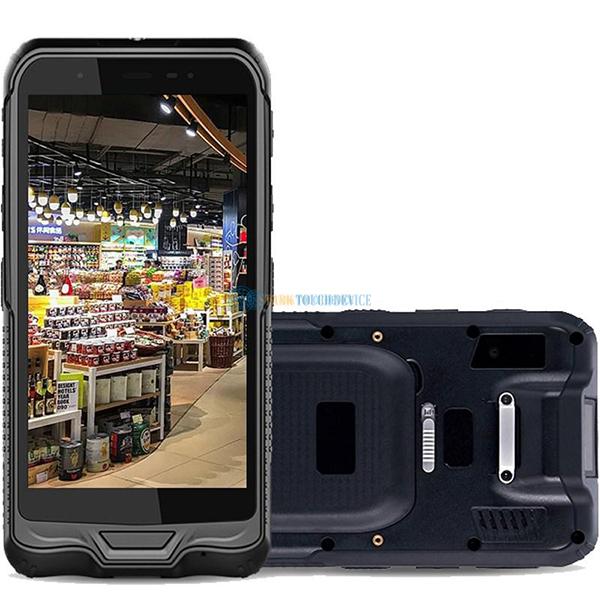Welcome STARK TOUCH DEVICE!
Solutions
Industrial control computer PCIe slot cleaning tool
Essential Tools for Cleaning PCIe Slots in Industrial Control Computers
Industrial control computers rely on PCIe slots to connect critical expansion cards, such as GPUs, network adapters, or specialized I/O modules. Over time, dust, debris, and even oxidation can accumulate in these slots, leading to poor contact, intermittent connectivity, or system errors. Proper cleaning tools and techniques are vital to maintain reliable performance in demanding industrial environments.

Understanding PCIe Slot Contamination Risks
PCIe slots in industrial settings face unique challenges compared to consumer-grade systems. Factors like vibrations, temperature fluctuations, and exposure to airborne particles accelerate the buildup of contaminants. These residues can interfere with the electrical connections between the slot and the expansion card, causing signal degradation or hardware failures.
Common Contaminants:
Dust and Fibers: Fine particles from manufacturing processes or environmental dust can settle into slot crevices.
Metal Oxidation: Humidity and temperature changes may cause oxidation on the slot’s gold-plated contacts, reducing conductivity.
Adhesive Residues: Sticky substances from labels or packaging materials can attract dirt and clog the slot.
Specialized Tools for Safe and Effective Cleaning
1. Soft-Bristled Brushes for Loose Debris Removal
A small, anti-static brush with soft bristles is ideal for dislodging loose dust and fibers from PCIe slot interiors. The bristles should be dense enough to reach deep into the slot without scratching the delicate contacts. Avoid using brushes with stiff or metallic bristles, as they can damage the slot’s surface.
Usage Tip: Hold the brush at a 45-degree angle and gently sweep along the length of the slot. Rotate the brush to ensure all sides are cleaned. For stubborn debris, lightly blow into the slot (using clean, dry air) to help dislodge particles.
2. Compressed Air for Deep Crevice Cleaning
Compressed air, delivered through a narrow nozzle, is effective for removing debris from hard-to-reach areas of the PCIe slot. The high-pressure air stream can dislodge particles trapped beneath the slot’s edge or around the retention clip.
Safety Precautions:
Use short bursts of air to prevent moisture buildup inside the slot.
Maintain a distance of at least 5 cm between the nozzle and the slot to avoid physical damage.
If using canned air, keep the can upright to prevent propellant from spraying onto the slot.
3. Contact Cleaning Swabs for Oxidation and Residue Removal
For oxidation or adhesive residues on the slot’s gold contacts, specialized contact cleaning swabs are necessary. These swabs are typically pre-moistened with a non-conductive, residue-free cleaning solution that evaporates quickly without leaving streaks.
Application Process:
Gently insert the swab into the slot and rotate it to cover all contact surfaces.
Avoid applying excessive pressure, as this can bend or scratch the contacts.
For heavily oxidized slots, repeat the process with a fresh swab until the contacts appear shiny and clean.
Advanced Techniques for Persistent Contamination
Isopropyl Alcohol for Stubborn Residues
In cases where adhesive residues or heavy oxidation persist, isopropyl alcohol (IPA) with a concentration of 70% or higher can be used. Dip a lint-free cloth or swab into the IPA and wring out excess liquid before cleaning the slot. Ensure the slot is completely dry before inserting any expansion cards.
Important Note: Never pour IPA directly into the slot, as liquid ingress can damage the motherboard or other components.
Magnifying Glass for Inspection
A magnifying glass or jeweler’s loupe can help inspect the slot for microscopic debris or damage after cleaning. This tool is particularly useful in industrial environments where even minor contaminants can cause significant issues.
Inspection Steps:
Shine a light into the slot to highlight any remaining particles.
Use the magnifying glass to examine the contacts for scratches, corrosion, or uneven wear.
If damage is detected, consider replacing the slot or consulting a professional technician.
Preventive Measures to Reduce Future Contamination
PCIe Slot Covers
When a slot is not in use, installing a protective cover can prevent dust and debris from entering. These covers are typically made of plastic or rubber and fit snugly over the slot opening.
Benefits:
Reduces the frequency of cleaning required.
Protects the slot from accidental damage during maintenance or component swaps.
Regular Maintenance Schedule
Establish a routine maintenance schedule to clean PCIe slots, especially in dusty or high-vibration environments. Cleaning intervals may vary from monthly to quarterly, depending on the operating conditions.
Best Practices:
Document each cleaning session to track the slot’s condition over time.
Train personnel on proper cleaning techniques to ensure consistency.
Monitor system logs for errors that may indicate slot contamination issues.


